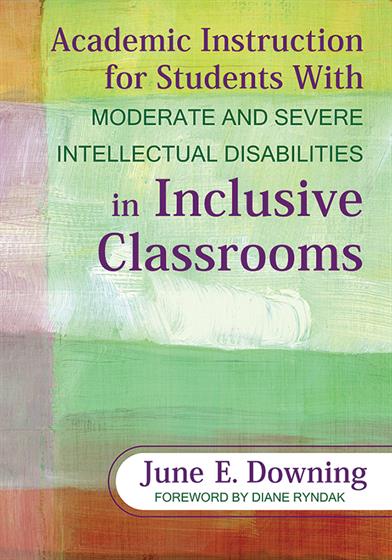Foreword. by Diane Ryndak
Preface
Acknowledgments
About the Author
1. Teaching Students With Moderate to Severe Intellectual Disabilities in General Education Classrooms: Foundational Beliefs
Key Concepts
A Historical Perspective: Where We Came From
The Present Situation and Challenge
What is Inclusive Education?
What is Not Inclusive Education
Who Are We Talking About?
Summary
2. Instructional Strategies and Teaching Arrangements
Key Concepts
Characteristics of Effective Instruction for All Students
Clear Expectations
Analyzing Tasks for Improved Learning
What We Know About Teaching Students with Moderate to Severe Intellectual Disabilities
The Importance of Student Interests
Components of the Teaching Task
Prompting Strategies
Consequences of the Behavior
Using Sequences of Different Prompts to Teach Students: Shaping Behavior
Maintaining and Generalizing Skills
Teaching Arrangements in General Education Classrooms
Summary
3. Determining Student Needs: What to Teach
Key Concepts
Limitations of Standardized Assessment
Family and Child-Based Assessment Procedure
Record Review
Observational Assessments
What’s the Class Doing?
Interpreting Content Standards
Blending Student/Family Goals with State Standards
Identifying Learning Opportunities
Writing IEP Goals and Objectives
Summary
4. Teaching Core Curriculum to Students With Moderate to Severe Intellectual Disabilities
Key Concepts
The Critical Need to Adapt Curriculum to Make it Meaningful
Identifying the BIG Ideas from Core Curriculum
Determining Prompts to Use for a Particular Student and Lesson
Examples of Students Receiving Direct Instruction Across Grades and Instructional Arrangements
Large Group Instruction
Generalization of Skills Taught
Summary
5. It Takes a Village: Teaching as a Collaborative Effort
Key Concepts
The Expectation of Team Collaboration
Team Members Involved in Instruction
Credentialed Teachers
Co-Teaching
Supporting General Education Ownership
Paraprofessionals as Teachers
Related Service Providers
Parent Volunteers
Peers as Teachers
A Few Cautions When Using Peers
The Need for Information and Training
Effective Use of Team Members
The Importance of Consistency
Generalization of Skills Across Team Members
Summary
6. Keeping Track of Student Progress, by Kathryn D. Peckham-Hardin and June E. Downing
Key Concepts
Types of Data Collection Strategies
Linking Data Collection Methods to the IEP Objectives
Collecting Data While Teaching in General Education Classrooms
Examples of Collecting Data During Instructional Times
Test Taking by the Class
Training Paraprofessionals and Others to Take Data
The Need for Alternate Assessment
Summary
7. He’s Getting It! Now What? Taking Learning to the Next Level
Key Concepts
Involving the Student in Planning Next Steps
Writing IEP Objectives to Reflect Next Steps
Using Standards and Performance Indicators to Determine Next Steps
Using Task Analyses to Determine Next Steps
Using Life Needs to Determine Next Steps
Postsecondary Options
Next Steps for Nonacademic Skills
Summary
References
Index



